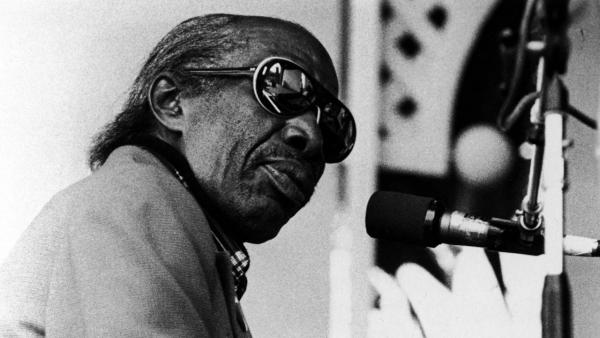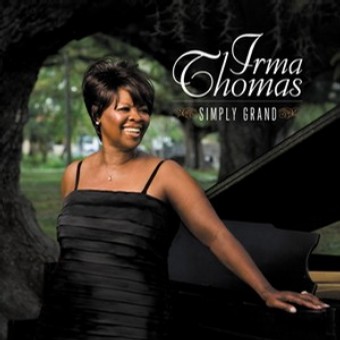
Leni Sinclair / Michael Ochs ArchivesProfessor Longhair's "Tipitina" is a New Orleans funk staple and a template for the New Orleans piano style.
KPLU, February 18, 2009 - It's Mardi Gras week in New Orleans, so it's as good a time as any to join in the celebration with a brief but broad overview of some of the Crescent City's many extraordinary pianists.
One of the beauties of New Orleans piano music is that once you hear it, you'll know it whenever you encounter it again, regardless of context. Whether it's played as jazz or blues or funk, the cultural gumbo that makes up this piano style is unique to New Orleans — and, if a style can be said to have a personality, New Orleans piano has personality to burn.
There's only room for five examples in this list, but if you like what you hear, many more New Orleans pianists merit further exploration, including Tuts Washington, James Booker, Fats Domino, Cousin Joe, Jon Cleary, Ellis Marsalis, David Torkanowsky and — when he's in the mood to really throw down and play — Harry Connick Jr., to name just a few. So start with these five and spread out. You'll most assuredly "pass a good time," as they say down Acadiana way.
Celebrate Mardi Gras With New Orleans Piano

Jelly Roll Morton
Album: Last Sessions: The Complete General Recordings
Song: Crave
Jelly Roll Morton was one of the most important figures in early New Orleans jazz, not to mention one of the most colorful. Never one to eschew the spotlight, he often made the claim that he "invented" jazz. Although that's most probably untrue, there's no denying his impact on the creation and development of this music. He was a songwriter, a bandleader and a monstrously gifted pianist. What we have here is a 1939 solo piano recording of "The Crave," a song he'd written approximately 20 years earlier. It features what Morton called "the Spanish tinge," which basically refers to the touches of habanera rhythms that were present in many of his songs and reflect his Creole heritage. "The Crave" is exuberant, exhilarating, funky and just a little bit eerie -- sort of like New Orleans itself.

Professor Longhair
Album: New Orleans Piano
Song: Tipitina [*]
Henry Roeland Byrd, known to the world as Professor Longhair (and to his friends as 'Fess), added many ingredients to pianistic New Orleans music with his blend of blues, calypso, mambo, rumba and rock 'n' roll. "Tipitina" was created in a recording studio one day in 1953 when music producer Jerry Wexler asked Longhair to do an eight-bar blues cut in the style of an existing song called "Tee Nah Nah." He quickly put together an arrangement, appropriated a few verses of lyrics that were common to a number of blues songs, and created a chorus that was basically nonsense. Thanks to Longhair's unique genius, the song went on to become a New Orleans funk staple and the template for New Orleans piano style from then on.

Dr. John
Album: Dr. John's Gumbo
Song: Junko Partner
Thanks in no small part to his 1973 hit record Right Place, Wrong Time, Dr. John (born Malcolm John Rebennack) is probably the most well-known New Orleans pianist in the world. He's also one of the best. His early albums in the late 1960s and early '70s fused psychedelic influences with New Orleans rhythms, which gained him a following with the hippie generation. In 1972, however, he dropped the psychedelia and made an album that was pure, unadulterated New Orleans -- called Gumbo. This version of "Junko Partner" is from that release. As with many blues songs, its provenance is murky, but it's been a New Orleans standard for decades. Although the saxophone is dominant in the instrumental passages, listen to those sections closely and you'll hear Dr. John soloing like crazy beneath the saxophonist, even as he accompanies him.

Henry Butler
Album: Homeland
Song: The Game Band Strut
It's not uncommon to hear of musicians who begin their recording careers in R&B or blues and then progress to jazz. Henry Butler did it the other way around. His debut albums in the early '80s were jazz-piano trio recordings featuring top-flight accompanists such as Charlie Haden, Billy Higgins, Ron Carter and Jack DeJohnette. Soon, however, his roots began to show, and he was drawn back to the music of his native city. So here's a man who can play classical pieces and intricate hard bop, and also lay down some of the fattest New Orleans funk you'll ever hear. The Game Band Strut is an example of the latter. Along with Butler on piano and organ, you'll hear great work from Vasti Jackson (guitar), Nick Daniels III (bass) and Raymond Weber (drums galore).

Allen Toussaint
Album: Our New Orleans
Song: Tipitina and Me
It's fairly safe to say that Allen Toussaint has done more to popularize the sound of New Orleans music than any other musician on this list. Yes, Jelly Roll Morton supplied the basic ingredients. Yes, Professor Longhair and Tuts Washington defined what would be the basic sound of modern New Orleans piano. But as a songwriter and producer, Toussaint was the man who took that sound, fused it with a pop sensibility and, beginning in the early 1960s, started producing records that would spread New Orleans music all over the map. With artists including Art and Aaron Neville, Lee Dorsey, Irma Thomas and Ernie K-Doe -- and songs such as "Ruler Of My Heart," "Working in a Coalmine" and "Fortune Teller" -- Toussaint made immortal R&B records and played the piano on many of them. With "Tipitina and Me," Toussaint brings our list full-circle. He takes Professor Longhair's classic song and plays in an almost classical style, while also summoning the spirit of Jelly Roll Morton and some of the zeitgeist of post-Katrina New Orleans. Then, at the end, after he's hit what seems to be the final chord, he elegantly, and somewhat wistfully, adds the opening notes of Longhair's song "Going to the Mardi Gras" as if to say, "No matter what kind of blow New Orleans is dealt, its spirit will never die.

A very important FYI: Tipitina's plays a critical role in WWOZ's history. Our first broadcasts in 1980 were from a cramped apartment above Tip's. WWOZ's tradition of bringing live, local music to the airwaves began when DJs would drop a microphone through a hole in the floor to record performances from Tip's stage.
Legend #5: While an apple a day might keep someone healthy up north, down here in the northernmost city of the Caribbean, a saying that the Fabulous Fourteen used to toss around was "a banana a day keeps the doctor away."


 S
S




























